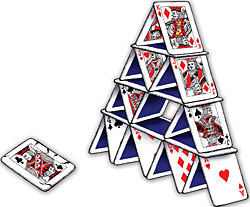|
|
Over the past eight years, it has been a remarkable experience to see the consciousness of common Nepalis—be they from the Pahad or Madhes—evolve from being loyal subjects of a king to aspiring citizens of a republic of laws.
After penning over 400 State of the State columns from the days of pre-launch online issues of Nepali Times, the Zero Edition in print and the hardcopy #1, I have learnt the pedagogy of punditry by doing.
And I have learnt to face the music that comes from pontificating from the pulpit. But all told, the joys and sorrows of preparing rough drafts of history, as possible testimonies for mythmakers of the future, have been intense.
It's difficult to recapitulate eight years of history running on steroids, but five issues dominated almost everything written during this period in this column:
• Revolution vs reform as the preferred method of political change
• Constitutional monarchy vs communist regime and the importance of the political centre
• Nepalipan versus Nepaliyata and the question of identity
• Nepal's dependency and doubts over the intentions of India
• The challenges of building an inclusive, progressive and democratic Nepal where the margins and the mainstream compete rather than contest for control over commons and the state.
The Constituent Assembly will have to struggle with all these issues as it begins to write the supreme law of the land from next month.
The royal palace was never comfortable with the notion of constitutional supremacy. K P Bhattarai once confided at home that King Birendra thought that the army was his. That was the inspiration for a column on the 'Royal Nepal Army (Pvt.) Ltd', a piece that proved to be sadly prophetic when King Gyanendra posted it to watch the prime minister prior to dismissing him from his post.
Civil-Military relations will probably be tougher to handle than the management of Maoist combatants. The April Uprising made the Rhododendron Revolution redundant, but if peaceful politics isn't allowed to exist, warts and all, the risk of chronic coups will remain even when Nepal becomes a democratic republic.
It was the Narayanhiti Massacre that heralded the beginning of the end of the Shah regime. Gyanendra merely rushed the process by desiring to be the son of his father rather than an accidental inheritor of his brother's throne. The dates 22 May 2002, 4 October 2002 and 1 February 2005 were merely signposts on the road to republicanism.
The journey had begun the day King Birendra refused to let the government use all its instruments, including the army, to fight an incipient insurgency. Once it grew into a full-fledged rebellion, there was no way but to relent. In the coming days, the importance of the political centre to counter the possibility of communist totalitarianism will probably emerge with even greater force.
Reorienting the Nepal-India relationship is more complex with the Madhes claiming its right to be heard and Maoists ready to make any compromise to entrench themselves in Kathmandu. But unless they listen to each other and decide to work together, the dream of an inclusive republic of Nepal will remain a dream.
We will continue to chase that dream. After all, as someone rightly asked, What are heavens for?




